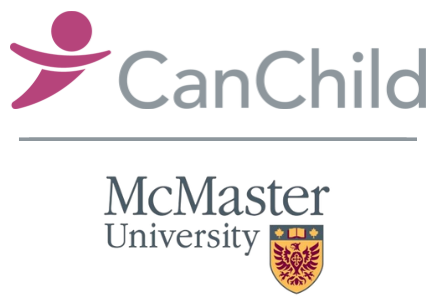GMFM scores of a sample of over 650 Ontario children with cerebral palsy with varying GMFCS levels have been used to create five Motor Growth Curves. These curves describe the patterns of motor development of this sample of children, grouped by GMFCS level and are similar to the growth charts that are used to follow the height and weight of children as they grow. These “growth curves” help doctors, therapists, and families to understand how the gross motor abilities of children in each level change with age, and to estimate a child’s future motor capabilities including how much independence children are likely to achieve.
The Motor Growth Curves present a plot of GMFM-66 scores (on the vertical axis) by age (across the horizontal axis) for each of the five GMFCS levels. They were developed from data obtained from a large, population-based sample of children with cerebral palsy (Rosenbaum et al., 2002). On first assessment using the GMFM-66, a child’s relative ranking compared to children in the population-based sample can be determined. With repeated scoring over time, it is possible to determine whether a child is functioning as well as expected, better than expected or more poorly then expected.
Rosenbaum, P., Walter, S., Hanna, S., Palisano, R., Russell, D., Raina, P., Wood, E., Bartlett, D., & Galuppi, B. (2002). Prognosis for gross motor function in cerebral palsy: Creation of motor development curves. Journal of the American Medical Association, 288 (11), 1357-1363.
Percentiles
Tabulated reference percentiles are available for use with the GMFM-66 to assess children with cerebral palsy. The percentiles are presented by GMFCS levels, and are suitable for scientific or clinical use in conjunction with the GMFM-66 manual. The percentiles are derived from a longitudinal sample of 1940 GMFM-66 assessments of 650 children with CP, 2 – 12 years of age. This stratified (by age and GMFCS) random sample was collected from among all children with CP who were receiving a variety of developmental therapies and services at publicly funded children’s rehabilitation centres in Ontario, Canada, between 1996 and 2001.
The development and appropriate use of these percentiles is described in:
Hanna, S.E., Bartlett, D.J., Rivard, L.M., & Russell, D.J. (2008). Reference curves for the Gross Motor Function Measure: Percentiles for clinical description and tracking over time among children with cerebral palsy. Physical Therapy 88(5) 596 – 607. doi: 10.2522/ptj.20070314
Frequently Asked Questions
Q. What are the motor growth curves, and what information do they provide?
A. The curves can be used to describe patterns of gross motor function for children with cerebral palsy over time, and to estimate a child’s future motor capabilities (similar to height and weight growth charts). The motor growth curves present a plot of GMFM-66 scores (on the vertical axis) by age (across the horizontal axis) for each of the five GMFCS levels. They were developed from data obtained from a large, population-based sample of children with cerebral palsy (Rosenbaum et al., 2002).
Rosenbaum, P., Walter, S., Hanna, S., Palisano, R., Russell, D., Raina, P., Wood, E., Bartlett, D.J., & Galuppi, B.E. (2002) Prognosis for Gross Motor Function in Cerebral Palsy: Creation of motor development curves. Journal of the American Medical Association, 288:1357-1363.
Q. Who can use the motor growth curves?
A. Anyone who can administer and score the GMFM-66 can plot an individual child’s score.
Q. How can the motor growth curves be used?
A. On first assessment using the GMFM-66, a child’s relative ranking compared to children in the population-based sample can be determined. With repeated scoring over time, it is possible to determine whether a child is functioning as well as expected, better than expected or more poorly then expected (to be developed after completion of the clinical tracking paper – S. Hanna).
Q. How frequently should a child’s GMFM-66 score be plotted?
A. There is no recommended frequency however plotting scores at yearly intervals would be appropriate.
Q. What are the implications for services when the GMFM-66 scores reach a plateau?
A. It is important to be aware that while children with cerebral palsy may reach a plateau in the abilities specifically measured by the GMFM-66, decisions regarding service provision should not be based on their GMFM-66 scores alone. Gross motor function in children with cerebral palsy may continue to change over time as they use these abilities in the context of daily life. It is also important to keep in mind that children with cerebral palsy continue to develop important quality of movement aspects which may, in turn, improve overall gross motor performance. The goals of service provision may shift away from a focus on the development of motor skills towards such goals as the prevention of secondary impairments. As well, physical goals may be replaced with communication or other goals. Decisions regarding service provision must take all of these factors into account.
